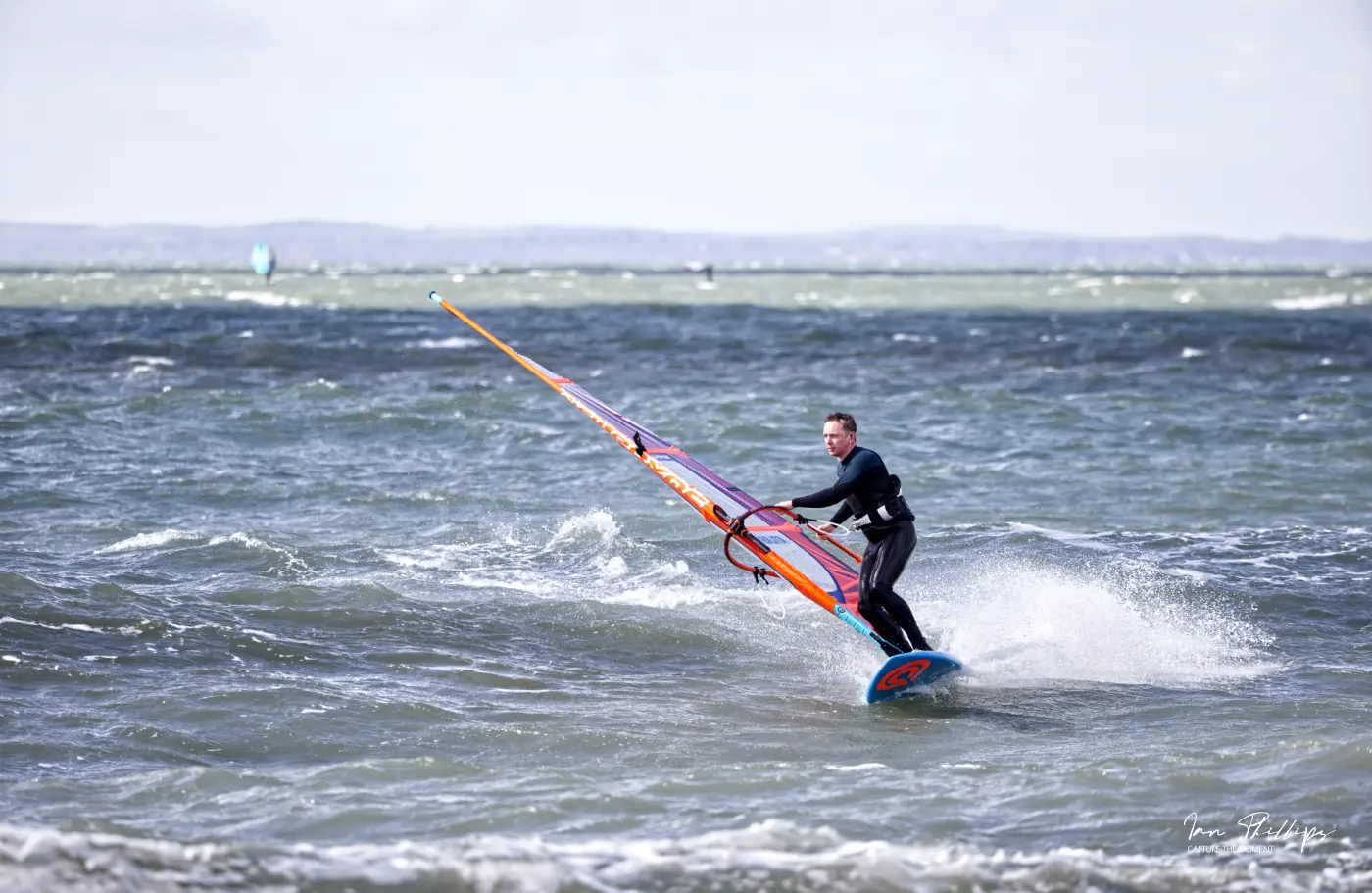If you’re looking for wing foiling lessons for beginners then we can certainly help you on your adventure.
Our introduction to wing foiling lesson takes place in the safe waters of Chichester Harbour in West Sussex.
You’re going to be winging in enclosed waters and will have the best chance of success as there’s no waves or heavy currents to deal with.
Our wing foiling instructors are qualified with the RYA and our sessions are very fluid meaning we adjust to suit the skills of the attendees.
Starting out on a wing foiling lesson
To join us on a wing foiling lesson we do expect you to have had previous experience of handling a wing and being comfortable handling the wing in varying strength winds, being able to light wind gybe, tack, self rescue and generally handle all points of sail.
Most of the time the people who have attended our winging, wing sup and wing surfing lessons are the ones who progress onto our foiling sessions as they’ve covered all the training points to a good standard and have had a chance to practice.
Anyway, for those who do join us for the wing foiling lessons, we have a structure that is progressive, whilst maintaining a good level of safety, but that said, everyone is made aware of the risks with foiling before they start.
All said and done, the starting out phase is much like with other sessions we run like the windsurfing lessons. We’ll start off looking at the conditions, as they’re going to be windier than you may have experienced before. With wind comes chop so you’re going to encounter more bumpy water, but this won’t be too bad as our beginner foil boards are big and stable to make your life easier.
We’ll start by looking at the foil and explain how this works. It is important to understand how the foil generates lift and along with that you can then see how you can overpower the foil and what happens when it breaches out of the water. With this information in the back of your mind, you need to focus on the very specific actions we offer you as this really helps to better your progress to First Flights.
What to wear when wing foiling
It is imperative to wear something that helps protect you from injuries. An impact vest will help protect the upper body, whilst a helmet is a must. You’ll also want to wear shoes or boots to save you kicking the foil under the water.
Handling the wing foiling kit on land and launching
With the foil and wing in place it is super important to know how to move it around safely. You have to maintain a safe space around you and others, whilst making sure your own kit does not get damaged in the wind. We’ve all ripped our wing on the foil blade so you won’t be the first, so making sure you’re thinking smart all the time on land is really important.
The trick to moving kit on land is look around you and keep room to move. And know the wind direction. Keep the wing flying downwind of the board and keep the foil either over your shoulder or pointing into wind. Sometimes it is easier to walk the board and foil to the waters edge, then bring the wing down afterwards, but remember to keep the foil out of the way of kids running around as it is a lethal weapon.
Basic safety rules apply as with any watersports kit on a beach or land, but if you always have the wing downwind of the foil, it simply cannot get spiked on the foil blade, so that is a huge bonus.
reading the conditions
Now you’ve got a foil on the bottom of your board, your going to have to plan depths both when launching and landing and general sailing. What you don’t want to do is run aground, hit rocks and or grind into the sand and get catapulted. You could also find yourself cracking the board, so we need to work out if there are any rocks, reefs, sandbars.
We’ll consider wind direction and where this will allow us to sail as well as looking for other people on the water and any outside variables that may affect our safety and sailing zone.
Something else that you need to think about especially when going out alone is the wind and it is set to drop at any time soon or any storms and thunder coming in.
Moving into the water
We’ll run through a basic mounting procedure and swimming around the board so you’re aware of having to say clear of the foil.
You need to keep your sits about you and not kick around, as you’ll end up booting the foil which really hurts.
Being aware of how the leash can wrap around the foil is also important and the ability to unwrap it and get yourself back on board.
Getting up on the wing foil board
Once your on the board, we’ll explain the pros and cons of facing forwards and sideways as well as spinning yourself around, which you sometimes need to do. This is especially important when in small waves and you need to become comfortable with just jumping up quickly.
Getting into position on your feet is no different to what you’ve learnt on our intro to winging course and the next 20 minutes or so is worth being spent just sailing around and getting used to how the foil feels under the board and how it affects the board, when steering and on points of sail.
Going for first flight on the foil
It’s time to give it a go, but there’s no rush. If you’re not ready, then go at your pace until you’re good to go.
One thing we’ll keep drilling through the headset is, “Front foot pressure”. You need to keep weight into that front leg. This helps to stop the board skyrocketing into the air, which is going to happen, but let’s try and reduce the drama.
Same as we did on the Winging course, you’re going to be pumping the wing to generate more power and from there the board will pick up speed and as it does you’ll feel the foil start to lift. Don’t hang back – drive forwards and go for more power – it’s an absolute must, but keep that front foot loaded.
If you feel the board go light under foot, you’ve probably lifted at which point you need to relax and look forwards, not down.
It’s gonna happen, but if you do take a dive, fall clear of the kit and DO NOT try and stay with it. Easier said than done, but this is something that will save you coming into contact with the foil.
safety
Foiling is dangerous and by choosing to foil with us, you are agreeing that you’re aware it is bloody dangerous and you could get hurt and injured.

We’ll give you an impact vest and helmet to wear, but you need your own wetsuit, booties.
Part of our training setup is a 2 way intercom that really helps us to connect with you and keep dialogue open so you can tell us what you’re experiencing and we can quickly relay instructions. The BBTalkin units are amazing bits of kit.
We’ve all been bashed, bruised and got cuts, it’s part of the process, so be ready – at some point it will happen.
How good do I have to be with a wing
You absolutely must be able to use a wing on a sup and be comfortable sailing around and always making it back to your launch spot. Preferably you have had a chance to practice and spend a bit of time handling slightly stronger winds, maybe force 3 or 4.
Do I have to be able to swim
100% – you are going to be in the water a fair bit, so you must be happy swimming. Whilst you have a leash, we’re going to be in deep water and things will happen fast, so the last thing you need to do is have a panic moment.
Do I need to be able to windsurfing or sail
Not at all. You most certainly don’t need to be a sailor as hopefully you’ve gained enough experience on our intro course for winging or have had a chance to spend a bit of time on the water yourself.
What’s important is that you are aware of the wind and how to maintain a course so you are able to get yourself back to your launch spot unaided.




